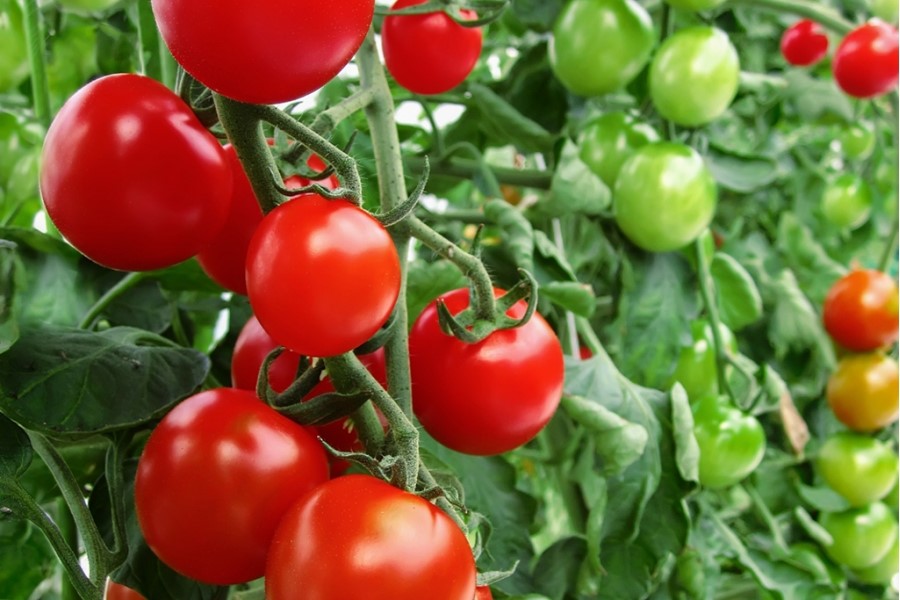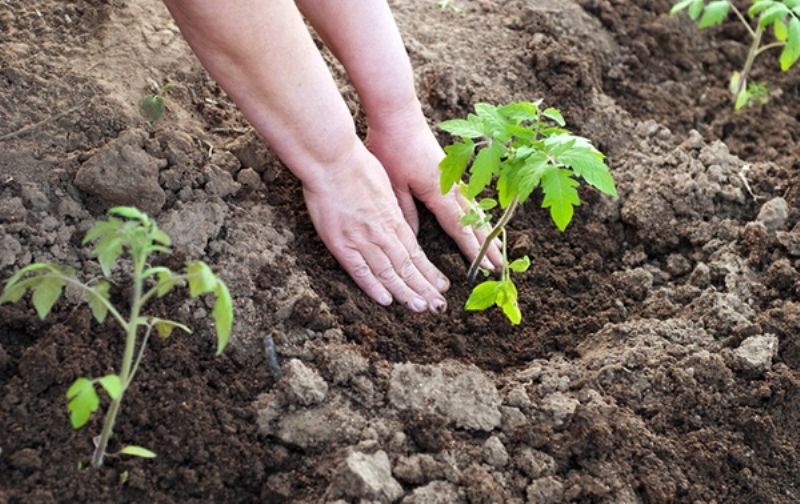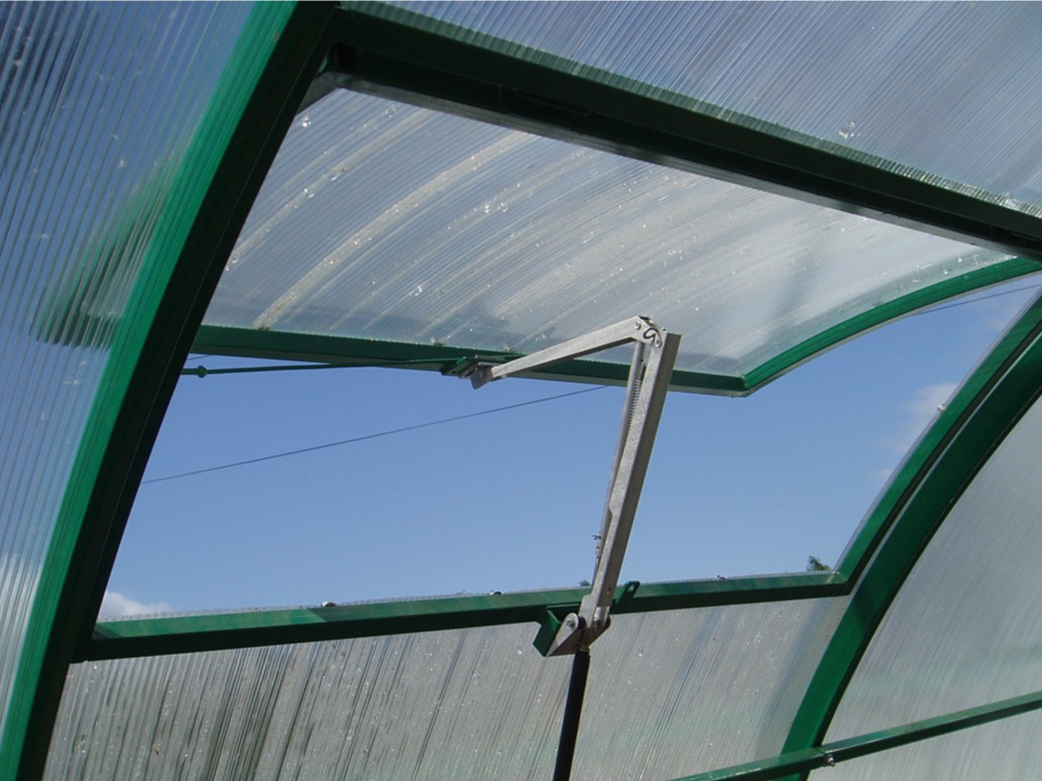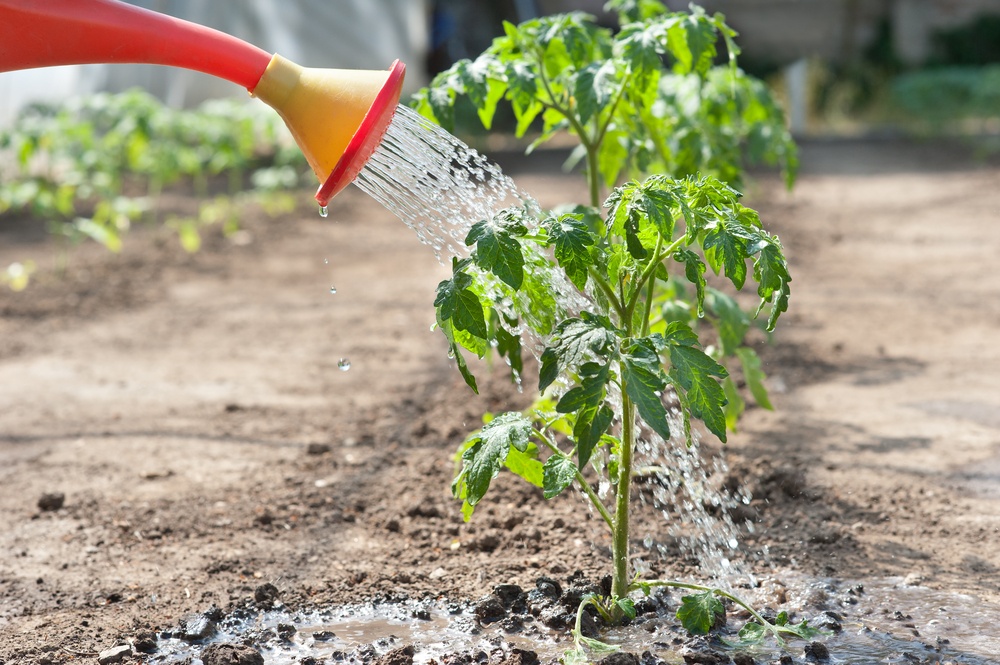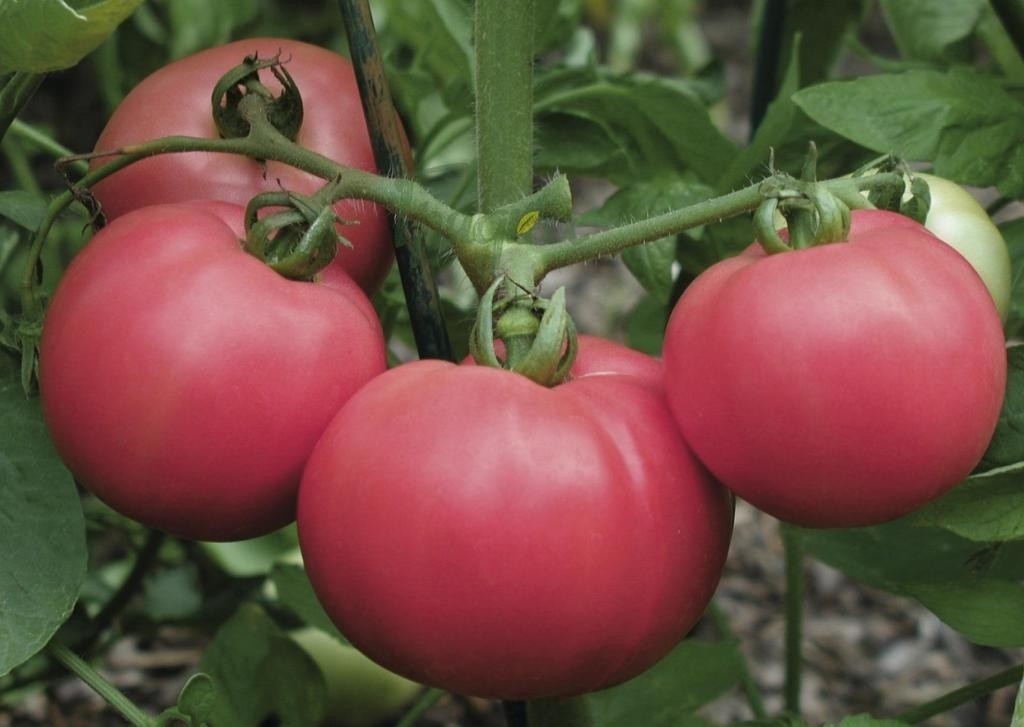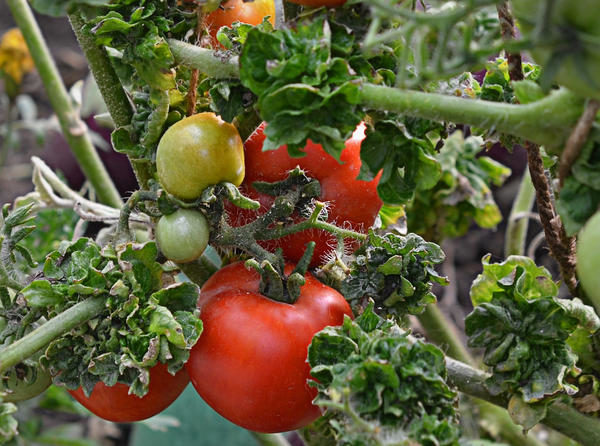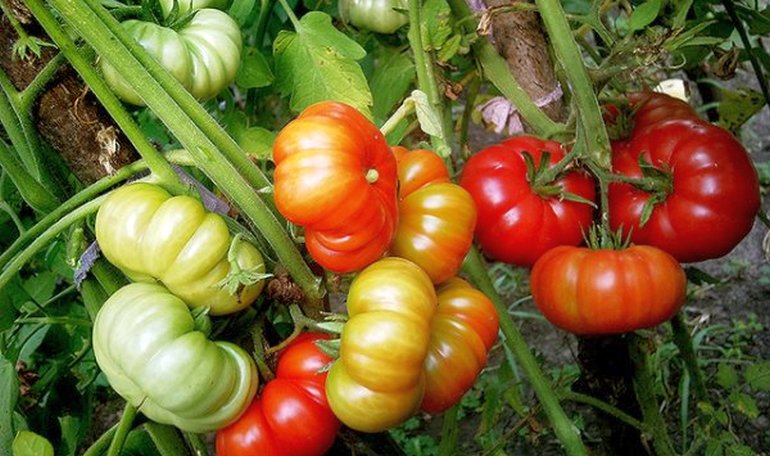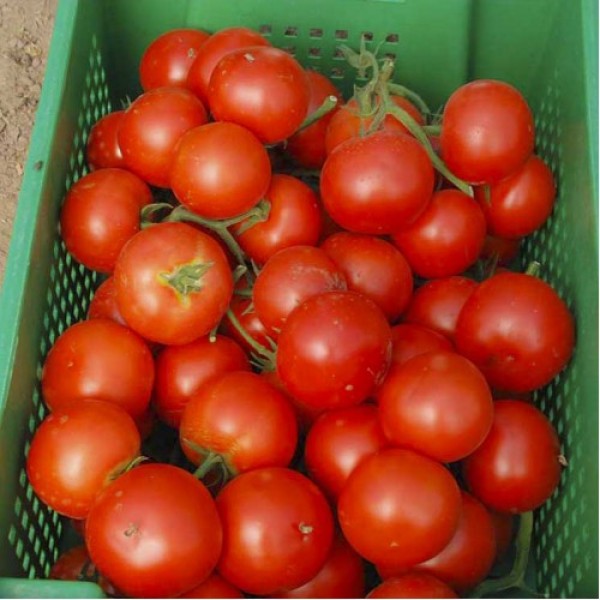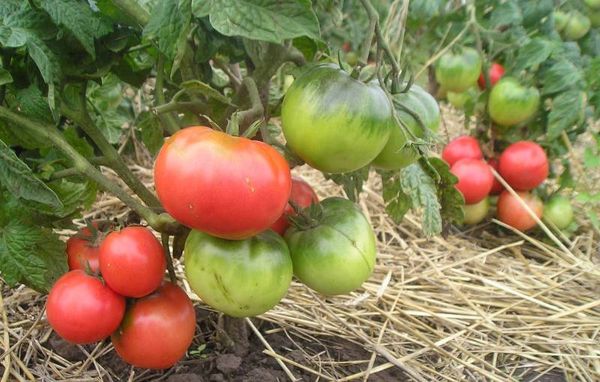Content:
A well-known variety of tomatoes, the Blagovest tomato, is the result of the research activities of Russian breeders. It was conceived as a species specially designed for cultivation in well-protected (closed) ground. The features of this garden plant are very fast, early ripening and an enviable yield, which makes it possible to breed it not only for personal consumption, but also for sale.
Background
From its intended purpose, it follows that the best conditions for breeding can be provided only in hotbeds or greenhouses. Only in this case it is possible to realize all the advantages of the Blagovest variety, including the already agreed early maturity and high yield.
Most amateur gardeners consider this tomato variety to be the best in its class. This is explained by the fact that it is characterized by the coordinated ripening of many fruits at once and is resistant to various garden diseases... In this regard, losses from pathogens and microbes are minimized for him.
In addition, the Blagovest tomato is distinguished by good resistance to long-term transportation, which guarantees its reliable delivery to the point of sale without any special losses.
Description and characteristics of the variety
Features of the main view
Although Blagovest tomatoes are a determinant variety - their bushes sometimes reach a height of almost 2 meters, to obtain such a result, it is necessary to form them correctly during growth, splitting them into a couple of independent branches.
We also note that during the active development of the Blagovest tomato stems, the characteristics and description of the variety of which are given below, they need constant support, so they should definitely be tied to artificial supports. Some experts are convinced that since the height of the plant can reach 2 meters, not only the main stem needs a garter, but also heavy clusters with fruits ripening on them.
The rest of the features of this variety are represented by its following characteristics:
- Up to 7 tomatoes can form on one brush of a tomato plant, the weight of each of which reaches 200 grams;
- On a unit of planting area, no more than 3 full-fledged bushes are usually planted;
- This plant regular pinching is required, and during periods of budding and flowering, it must be watered abundantly;
- On a relatively high and well-branched bush, leaf plates of gray-green color grow;
- The shape of the fruit is oval with barely noticeable ribbing, and the color is pure red;
- Its skin is quite dense with a glossy glow, and the flesh is sweet in taste.
We also note that in the process of transportation, vegetables of this variety are practically not damaged and retain their presentation. In addition to the pure use of "Blagovest" tomato tomato can be used in salads or for long-term preservation, which is a sign of the versatility of this variety.
Hybrid "Blagovest F1"
A well-known variety of the described crop, called "Blagovest F1", differs from the main species in a shorter ripening period (only 94 days) and a higher yield.
In addition, in this hybrid, the first brush appears already above the seventh leaf blade and usually consists of 10 inflorescences, from which fruits are subsequently formed.
However, the main variety, in comparison with the hybrid, has one very important advantage, which is that it transmits its genetic code through seeds and can be propagated independently. In contrast, hybrid seeds have to be purchased anew every year.
Cultivation technique
Transplanting
So that a good harvest of tomatoes can be harvested by the beginning of August, first of all, you should worry about fulfilling certain requirements. This means that the cultivation of this crop should be organized according to all the rules of agricultural technology, that is, it began with the planting of high-quality seedlings.
The step-by-step instruction, which describes all the operations performed during this, is as follows:
- First of all, we note that it is necessary to start this procedure already in the middle of March.;
- Before it is carried out, the seeds are checked for germination, for which they are first immersed in a saline solution. Those that have settled to the bottom are considered usable, and floating samples can simply be thrown away;
- Only after that, the selected planting material is planted in boxes filled with nutrient soil;
- To do this, small grooves are first made in the ground, into which seeds are then stuck to a depth of about one centimeter (at a distance of about five centimeters from one another);
- Then containers or boxes with seedlings are covered for a while with foil or glass;
- When the first shoots hatch, the shelter is removed so as not to interfere with their further development;
- By the time the seedlings are strengthened and the leaves appear on it, the roots should be picked with the simultaneous planting of individuals in separate containers with a capacity of at least 500 grams.
Further care of the seedlings consists in timely watering and careful monitoring of its growth.
Scanty portions of water will not be able to do any harm to the still not fully matured sprouts. In addition to watering, the soil under the "young growth" should be fertilized using proprietary nutrient mixtures.
At the age of about 45 days, the green shoots begin to be accustomed to fresh air (for hardening it is briefly taken out into the street) and only after this procedure is completed, they begin to transplant it into the closed ground. Usually, a well-equipped greenhouse is chosen as such a protected place.
Only if all the above recommendations and rules are followed, gardeners manage to get healthy and reliably rooted seedlings, which already have at least 8 leaf plates.
Transfer to soil
Before transplanting the Blagovest tomato variety into the greenhouse, the description of which was given above, you should thoroughly prepare the soil for them in the fall. During autumn loosening, a small amount of humus (compost) is added to it, which is introduced at the rate of about 5 kilograms per unit area.
When placed within the boundaries of the greenhouse area, bushes of this variety should be planted at a distance of about 60-70 cm from one another. At the same time, you immediately need to worry about reliable support for future powerful tomato stems, preparing it for the moment when they grow to about 30 cm in height.
In addition, it is necessary to closely monitor the watering regime of the growing bushes, the soil under which needs timely moistening.
Abundant watering of the plant with warm water (without exceeding the norm) is necessary at all stages of its growing season, including periods of flowering, the appearance of ovaries and the ripening of fresh and juicy fruits.
Upon completion of soil moistening, its obligatory loosening is required, followed by the removal of weeds and the organization of ventilation of greenhouse spaces (in order to maintain a normal moisture level).
Nutrient mixtures are applied under the bush no more than three times during the entire growing season of the growing tomato. Usually, as such a top dressing, a full set of widespread mineral fertilizers (superphosphate, nitrate, etc.) is used, applied immediately after abundant watering. This sequence of operations will ensure the safety of its root system from chemical burns.
Advantages and disadvantages
With properly organized care of a tomato crop called "Blagovest", it has the following indisputable advantages as a species:
- High yield;
- Good resistance to most types of garden diseases;
- Excellent germination of seeds of the grown plant;
- Possibility of long-term storage and transportation of the harvested crop.
The easily removable disadvantages of Blagovest tomato include the admissibility of growing only in greenhouse conditions, as well as the need to support heavy bushes with abundantly ripening fruits. In general, this variety has much more pluses than minuses, which attracts many amateur gardeners to it.
In the final part of the review, we note that if all the previously described rules for growing Blagovest tomatoes are observed, it will be possible to get a fairly rich harvest in autumn. It should be enough not only for preparing salads and eating in its pure form, but also for pickling and pickling large and tasty tomatoes.
